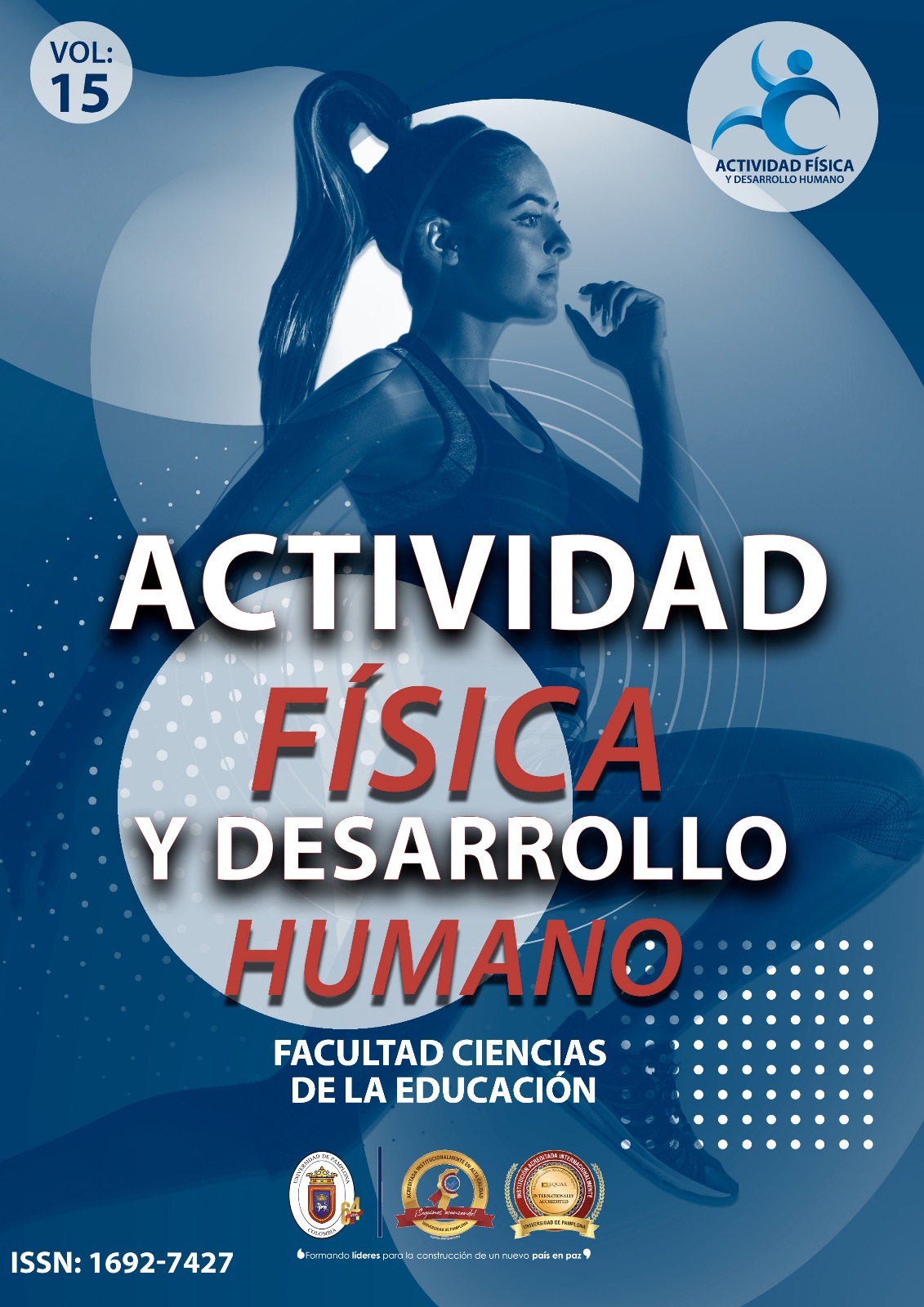Análisis de la composición corporal y somatotipo en estudiantes universitarios
DOI:
https://doi.org/10.24054/afdh.v15i1.3135Palabras clave:
Composición Corporal, Somatotipo, Pliegues, Índices, Diametros, perímetrosResumen
La investigación analizó la composición corporal y el somatotipo de los estudiantes inscritos en la Licenciatura en Educación Física, Recreación y Deportes de la Universidad del Atlántico mediante métodos antropométricos estandarizados. Se evaluaron variables cruciales como el porcentaje de grasa corporal, masa muscular y densidad ósea a través de mediciones precisas de peso, estatura, circunferencias corporales y pliegues cutáneos, lo que permitió calcular indicadores como el índice de masa corporal (IMC). Además, se llevó a cabo una clasificación somatotípica (endomorfia, mesomorfia, ectomorfia) según el método Heath-Carter. Los resultados mostraron diferencias significativas en la composición corporal entre los géneros, señalando una tendencia preocupante hacia problemas relacionados con el peso en esta población estudiantil. Estos hallazgos proporcionan una base empírica sólida para diseñar intervenciones destinadas a promover hábitos de vida saludables entre los estudiantes universitarios.
Descargas
Referencias
Carter, J. E. L. (1982). Body composition and physical performance: Applications for the military services. Washington, DC: National Academy Press.
Carter, J. E. L., & Heath, B. H. (1990). Somatotyping: Development and Applications. Cambridge University Press.
Faulkner, J. A. (1968). Physique and composition as related to athletic performance. Exercise Physiology, 18(2), 1-44.
Grupo Español de Cineantropometría (GREC). (2023). Consenso de cineantropometría. Madrid: GREC.
Heath, B. H., & Carter, J. E. L. (1967). A modified somatotype method. American Journal of Physical Anthropology, 27(1), 57-74.
IBM Corp. (2008). IBM SPSS Statistics for Windows, Version 17.0. Armonk, NY: IBM Corp.
International Society for the Advancement of Kinanthropometry (ISAK). (2001). International standards for anthropometric assessment. Underdale: ISAK.
Lee, R. C., Wang, Z., Heo, M., Ross, R., Janssen, I., & Heymsfield, S. B. (2000). Total-body skeletal muscle mass: development and cross-validation of anthropometric prediction models. The American Journal of Clinical Nutrition, 72(3), 796-803.
Lohman, T. G. (1981). Skinfolds and body density and their relation to body fatness: a review. Human Biology, 53(2), 181-225.
Marfell-Jones, M., Olds, T., Stewart, A., & Carter, L. (2006). International standards for anthropometric assessment. ISAK.
Microsoft Corporation. (2010). Microsoft Excel. Redmond, WA: Microsoft Corporation.
Norgan, N. G. (1994). Population differences in body composition in relation to the body mass index. European Journal of Clinical Nutrition, 48(S3), S10-S25.
Rocha, E. S. (1975). Morphological structure and the body composition of athletes. American Journal of Physical Anthropology, 42(1), 171-182.
Ross, W. D., & Marfell-Jones, M. J. (1991). Kinanthropometry. In The Physique of the Olympic Athlete (pp. 51-104). Karger Publishers.
Ross, W. D., & Marfell-Jones, M. J. (1991). Kinanthropometry. In J. D. Wilmore & D. L. Costill (Eds.), Physiology of sport and exercise (pp. 223-254). Champaign, IL: Human Kinetics.
Ross, W. D., Kerr, D. A., & Deurenberg, P. (1980). Kinanthropometry: Conceptual issues. In Kinanthropometry II (pp. 3-23). University Park Press.
Sánchez-Muñoz, C., Zabala, M., & Muros, J. J. (2016). Anthropometric characteristics, body composition and somatotype of elite male young athletes. International Journal of Environmental Research and Public Health, 13(2), 154.
Story, M., Kaphingst, K. M., Robinson-O’Brien, R., & Glanz, K. (2009). Creating healthy food and eating environments: Policy and environmental approaches. Annual Review of Public Health, 29, 253-272.
Withers, R. T., Craig, N. P., Bourdon, P. C., & Norton, K. I. (1987). Relative body fat and anthropometric prediction of body density of male athletes. European Journal of Applied Physiology and Occupational Physiology, 56(2), 191-200.
Descargas
Publicado
Número
Sección
Licencia
Derechos de autor 2024 Fabian Andrés Contreras Jauregui, Yamile Aslhoy Ramírez Serna, Dimitri José Martínez Movilla

Esta obra está bajo una licencia internacional Creative Commons Atribución-NoComercial-SinDerivadas 4.0.











